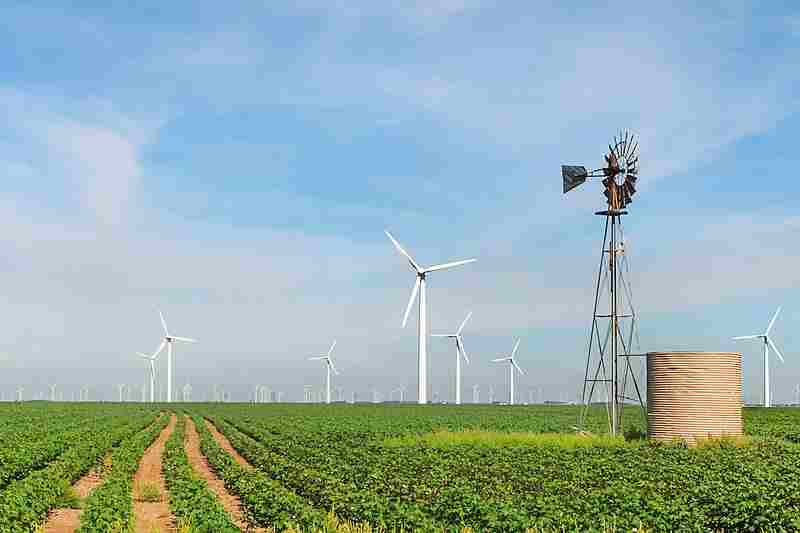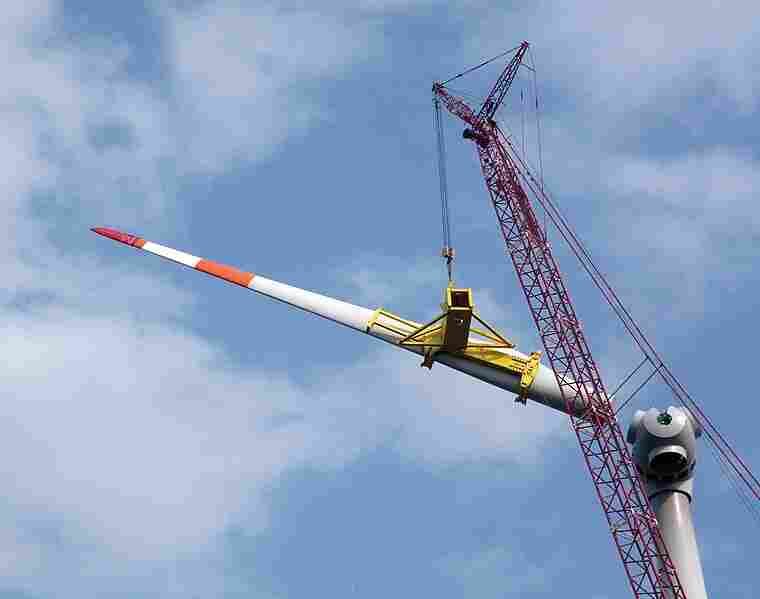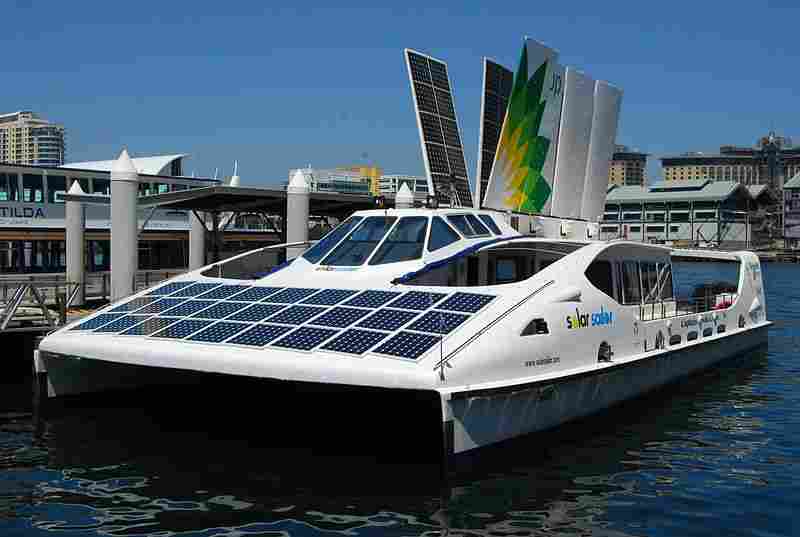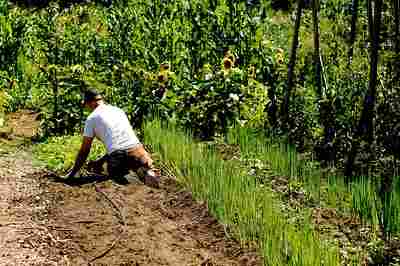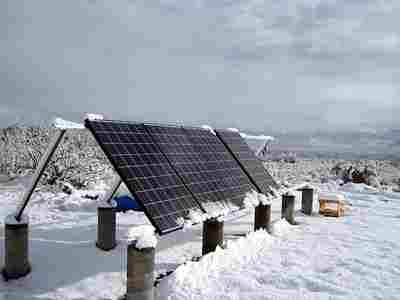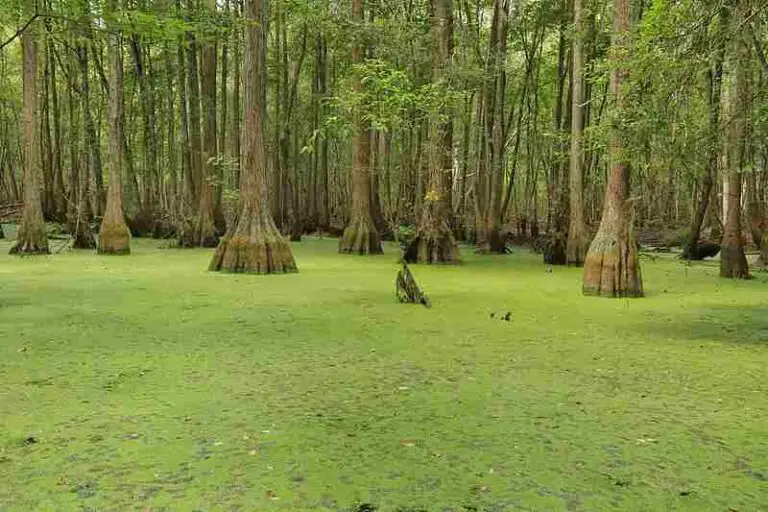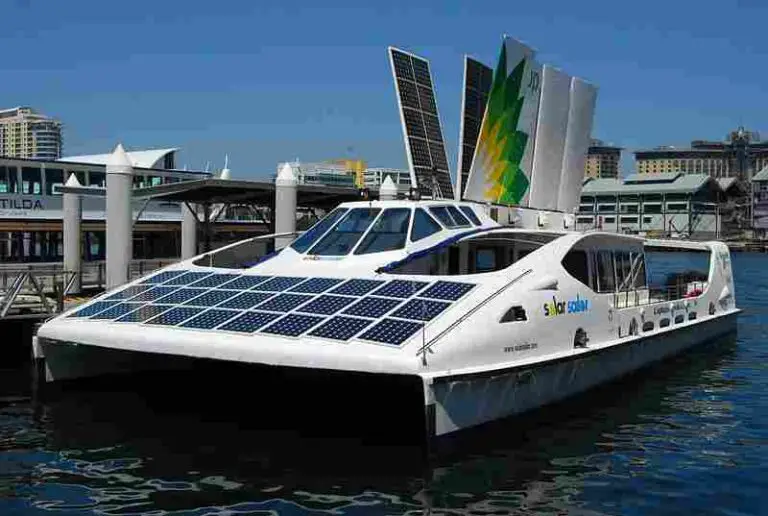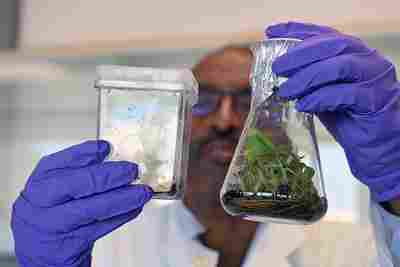9 Wind Turbine Advantages Discussed
Wind turbine advantages are; relatively simple design and installation, small environmental footprint, job creation, facilitation of energy security and backup, low operating costs, usability in agriculture, potential reduction of fossil fuel burning, flexibility of integration with other energy systems, and opportunity for continuous modification/improvement.
This article discusses wind turbine advantages to users and the society at large, as follows;
1). Simple Design and Installation (as one of the Wind Turbine Advantage)
Wind turbines offer the benefit of relatively simple design and installation processes. This simplicity can be advantageous in several ways, as discussed here.
Overview and Benefits of Relative Simplicity in the Design and Installation of Wind Turbines
A defined set of steps in the installation of wind turbines makes them accessible to users in the absence of high technological expertise. This can be traced to the modularity of the turbines, and the relatively simple principle on which they operate.
Installing a wind turbine involves several key steps. First, a foundation is prepared, often involving a concrete footing. Next, the tower, typically made of steel, is erected on the foundation. Then, the nacelle (the housing for the turbine's key components) and rotor are installed on top of the tower. Finally, the turbine blades are lifted and installed one by one by attaching them to the rotor. This step-by-step process, although requiring careful planning and equipment, is straightforward.

The relatively simple design of wind turbines makes them accessible for installation in various locations, including both onshore and offshore sites. This flexibility allows for the harnessing of wind energy in diverse geographic regions.
Wind turbines are often designed with modular components, which simplifies both installation and maintenance. If any part of the turbine requires replacement or repair, it can often be done with relative ease, reducing downtime and costs.
Some individuals and communities have even built their wind turbines, demonstrating that with the right knowledge and tools, it's possible to assemble and install wind turbines for personal use.
Additional Notes on Wind Turbine Installation
The installation of a wind turbine typically involves preparing a foundation, erecting the steel tower on the foundation, installing the nacelle and rotor on top of the tower, and attaching the turbine blades to the rotor. This process may vary slightly depending on the specific turbine design and location.
The tower is usually lifted into position by a crane, after which bolts are tightened to secure it. Next, the fiberglass nacelle, containing key components like the gearbox, main drive shaft, yaw controls, and blade pitch, is installed. These components are assembled and mounted onto a base frame at a factory before installation, simplifying the on-site assembly process. Finally, the turbine blades are attached to the rotor, completing the installation.
2). Wind Turbines Have a Low Environmental Impact
Wind turbines have a low environmental impact, and this is beneficial for several reasons, some of which are highlighted here.
Aspects and Benefits of the Environmental Footprint of Wind Turbines
Compared to non renewable energy technologies, wind turbines mitigate greenhouse emissions, produce clean energy, and may conserve land resources.
Wind power has one of the lowest global warming potentials per unit of electricity generated. This means that wind turbines produce far less greenhouse gas emissions compared to many other sources of electricity, like coal and natural gas. Lower emissions help combat climate change and reduce the carbon footprint of energy production.

Wind turbines generate electricity without releasing carbon emissions or other pollutants into the atmosphere. This clean energy production contributes to better air quality and reduced environmental pollution.
Wind turbines are typically installed vertically and occupy a relatively small footprint on the ground. This leaves a significant portion of the surrounding land available for other purposes such as farming, grazing, and recreational activities.
Lastly, wind is a renewable energy source, meaning it doesn't deplete over time. Unlike fossil fuels, wind power doesn't contribute to resource depletion.
Additional Notes and Reiterations on Wind Turbine Environmental Impact
Wind turbines have a low environmental impact compared to alternative energy resources and technologies. They produce clean energy, emit minimal greenhouse gases, and occupy a relatively small footprint on the land.
The environmental footprint of wind energy is relatively small compared to many other forms of energy. Wind energy produces around 11 grams of CO2 per kilowatt-hour (g CO2/kWh) of electricity generated, which is significantly lower than emissions from fossil fuels.
Wind turbines reduce the carbon footprint by generating electricity without emitting carbon dioxide (CO2) or other greenhouse gases. Wind power displaces electricity generated from fossil fuels, leading to an overall reduction in carbon emissions associated with electricity production.
3). Job Creation (as one of the Wind Turbines Advantages)
Wind turbines offer a significant advantage by creating jobs. Here it is shown why this is beneficial.
Overview and Benefits of Wind Energy-Related Jobs
Job opportunities created by wind energy (including turbine development), contribute economic, social and environmental sustainability.
The wind energy industry provides job opportunities across various sectors. This includes manufacturing and installation, where skilled workers are needed for making, transporting, and setting up wind turbines. The growth of this industry also leads to employment for engineers, technicians, and construction workers.
As the wind energy industry expands, it contributes to economic growth. This means more businesses and projects related to wind power, which in turn leads to more job opportunities. These jobs can be both short-term during the construction phase and long-term for maintenance and operation.
Globally, wind power has already generated millions of jobs. With the increasing installation of wind power capacity, more jobs are being created in countries around the world. This not only benefits individuals but also contributes to the overall workforce.
Job creation in the wind energy sector is part of a broader trend in the renewable energy industry. As more renewable energy sources are adopted, more job opportunities emerge. This growth is essential for a sustainable future.
Wind energy projects often create jobs in rural areas, including manufacturing, transportation, and construction. This is especially important for rural communities that may have limited employment opportunities.
Job creation in the wind energy sector aligns with climate change mitigation goals. It promotes the transition from fossil fuels to clean and sustainable energy sources, contributing to a greener future.
4). Wind Turbines Enhance Energy Security and Backup
Wind turbines have a valuable advantage when it comes to energy security and backup. Further discussions in this section show how this attribute is beneficial.
How Wind Turbine Energy Supplementation is Beneficial
The use of wind turbines helps to diversify the energy industry, reduce associated environmental degradation, increase affordability of energy, enhance grid stability and energy security, while reducing foreign dependency.
Wind turbines generate electricity from the wind, providing a diverse energy source. This diversity is crucial for energy security because it reduces dependence on a single energy type like fossil fuels. If one energy source faces challenges or disruptions, wind power can step in to fill the gap.
Unlike fossil fuels, wind energy doesn't produce greenhouse gas emissions. Using wind turbines to generate electricity helps reduce harmful emissions that contribute to climate change. This is essential for both environmental sustainability and long-term energy security.
The cost of wind energy has significantly decreased over the years, making it cost-competitive with traditional energy sources. This affordability enhances energy security by providing an accessible and cost-effective energy option.
Wind power contributes to grid stability. When integrated into the electrical grid, wind energy can provide backup power during high-demand periods or emergencies. This helps prevent blackouts and ensures a continuous energy supply.

Wind energy plays a central role in improving global energy security. It supports efforts to achieve net-zero emissions and reduce dependency on fossil fuels, making the world's energy supply more secure and sustainable.
At the local level, wind power projects can boost energy security to a significant degree. By harnessing wind resources, communities can become more self-reliant in meeting their energy needs, reducing vulnerability to external energy supply disruptions.
Wind turbines help reduce dependence on foreign sources of energy, enhancing a country's energy security. By harnessing wind resources domestically, nations can rely more on their own energy production.
5). Low Operating Costs (as one of the Wind Turbine Advantages)
Wind turbines have a significant advantage when it comes to operating costs. Further discussions below show how this attribute is beneficial.
Overview and Benefits of Low Operating Costs of Wind Turbines
Wind turbine usage usually leads to long-term savings due to the absence of fuel costs, and relatively minimal maintenance requirements. Modern wind turbines also tend to have high energy efficiency, which increases the value of their electricity output.
Wind energy systems don't require any fuel to generate electricity. They rely on the wind's natural power, so there's no need to purchase, transport, or store fuel. This eliminates a significant ongoing expense.
Also, wind turbines have relatively low maintenance costs. While they do require periodic inspections and maintenance, the expenses are modest compared to the continuous fuel costs associated with some other energy sources.
Once a wind turbine is installed, the primary ongoing cost is maintenance. This means that, over time, wind turbines can provide consistent energy production without the price volatility often seen with fossil fuels.
Experts anticipate that the operating costs of wind turbines will continue to decrease. As technology advances and turbines become more efficient, maintenance and operational expenses are expected to decline further.
Wind turbines are designed for efficiency, making the most of the wind's energy to produce electricity. This efficiency helps keep operating costs down and ensures that wind power remains a cost-effective energy source.
Additional Notes on Wind Turbine Operating Costs
Wind turbines have a low operating cost due to their reliance on wind energy, which eliminates fuel expenses, and their relatively modest maintenance costs.
The operating cost of a wind turbine can vary but is typically estimated to be around $40 per kilowatt (kW) per year, equivalent to 1-2 cents per kilowatt-hour (kWh) of operational expenses.
The cost of wind turbines can be reduced through technological advancements, larger and more efficient turbines, cost-effective materials for construction, and improvements in manufacturing processes.
Precise cost values of wind turbines depends on their size and capacity. Small wind turbines can start at a few thousand dollars, while larger utility-scale turbines can cost millions. The price can also vary based on factors such as location, installation, and available incentives or subsidies.
6). Usability in Agriculture
Wind turbines offer several advantages in agriculture. This section further discusses their use in the agricultural field.
Ways in Which Wind Turbines are Beneficial to Agriculturists
Integrating wind turbines with agricultural systems is a beneficial measure due to their small land footprint, income potential, clean energy generation, and crop benefits.
Large wind turbines typically use less than half an acre of land, including access roads. This means that farmers can continue planting crops and grazing livestock right up to the base of the turbines. Wind turbines occupy a relatively small area and don't interfere with farming activities.

Farmers can benefit economically from wind power. By hosting wind turbines on their land, farmers can receive lease payments or royalties from wind energy companies. This provides an additional source of income alongside traditional farming activities.
Wind turbines produce clean and renewable energy, which can be used on the farm itself. Farmers can use wind-generated electricity to power their operations, reducing reliance on conventional grid electricity and lowering energy costs.
Also, wind turbines can have a positive impact on crops in the vicinity. They mix air between ground level and higher up, creating slightly warmer and moister air under wind farms at night. This can help prevent frosts and reduce desiccation, ultimately benefiting crop yields.
Research suggests that wind turbines may reduce temperatures in agricultural fields. Lower temperatures can have a positive effect on certain crops, potentially increasing yield.
Additional Notes on Wind Turbine Usage in Agriculture
Wind power in agriculture is primarily used for generating electricity. This electricity can power various farm operations, including lighting, machinery, irrigation systems, and more.
Farmers can plant crops around wind turbines. Wind turbines have a small land footprint and are designed to coexist with farming activities. Farmers often continue planting crops and grazing livestock right up to the base of the turbines.
7). Potential Reduction of Fossil Fuel Burning (as one of the Wind Turbine Advantage)
Wind turbines offer several advantages when it comes to reducing the burning of fossil fuels. Here it is shown how this attribute is beneficial.
Wind Turbines and the Benefit of Reduced Fossil Fuel Reliance
By helping to reduce the dependence on fossil fuels, wind turbines increase clean energy availability, reduce emissions, mitigate air pollution, shrink the carbon footprint of energy production, and diversify the economy.
Wind turbines generate electricity without burning fossil fuels like coal, oil, or natural gas. Instead, they use the power of the wind to turn blades connected to a generator, producing clean and renewable energy.
Wind turbines do not release harmful emissions that pollute the air and contribute to climate change. They produce electricity without carbon dioxide (CO2) emissions, which is a major greenhouse gas responsible for global warming.
By producing electricity from wind energy, there is a reduction in the need for electricity generation from fossil fuels. This results in lower air pollution, as burning fossil fuels releases pollutants like sulfur dioxide and nitrogen oxides, which can harm human health and the environment.
Wind energy has a significantly lower carbon footprint compared to traditional fossil fuel sources. It produces only a fraction of the CO2 emissions per kilowatt-hour (kWh) of electricity generated when compared to coal or natural gas.
Lastly, wind power helps reduce our dependence on finite fossil fuel resources. This is crucial for energy security and sustainability, as fossil fuels are depleting resources, and their extraction can harm ecosystems.
Additional Notes on Fossil Fuel Dependence and Wind Turbines
Wind turbines are efficient in generating electricity, but their efficiency can vary depending on factors like wind speed and turbine design. However, they are considered a cleaner and more environmentally friendly option compared to burning fossil fuels.
The number of wind turbines required to replace fossil fuels entirely would depend on several factors, including energy demand, wind resources, and turbine capacity. It would likely require a significant number of turbines and a comprehensive transition to renewable energy sources to achieve such a replacement.
8). Flexibility of Integration With Other Energy Systems
Wind turbines offer a unique advantage when it comes to integrating with other energy systems. This section sheds light on the issue of integration, and its benefits to users.
Overview and Benefits of Wind Turbine Integration With Other Technologies
Integration of wind turbines with other technologies (which could be electricity-generating or energy storage systems) increases energy security and performance by reducing reliance on a single system.
Wind turbines can be easily connected to the electrical grid, allowing the electricity they generate to be seamlessly integrated into the existing power system. This means that wind energy can be used alongside other sources of electricity, such as coal, natural gas, or solar power.
Also, wind energy is often complementary to other energy sources like solar power. Wind turbines can generate electricity when the wind is blowing, while solar panels produce energy when the sun is shining. This means that by combining wind and solar power, we can have a more consistent and reliable energy supply.
Integrating wind energy into the grid reduces the need to rely on fossil fuels for electricity generation. When the wind is strong, wind turbines can generate a significant amount of power, reducing the need for coal or gas-fired power plants.
By diversifying the sources of energy in the grid, wind turbines contribute to energy security. This means that if one energy source faces disruptions or shortages, wind energy can help fill the gap, ensuring a stable power supply.
Additional Notes and Reiterations, on Wind Turbine Integration
Wind turbines are flexible and can easily integrate with existing energy systems, complementing other sources of energy and reducing our dependence on fossil fuels.
The integration of wind energy refers to the process of connecting wind turbines to the electrical grid and ensuring that the electricity they generate is smoothly integrated into the existing power system. It involves planning, infrastructure development, and operational strategies to optimize the use of wind energy.
Energy generated by wind turbines is transmitted through power lines connected to the electrical grid. The electricity is typically transformed to a higher voltage for efficient transmission and then distributed to homes and businesses.
The integration of solar and wind energy systems involves combining both solar panels and wind turbines into the same energy generation and distribution infrastructure. This integration allows for a more reliable and consistent supply of renewable energy, as the two sources can complement each other based on weather conditions.
The integration of renewable energy systems refers to the coordination and incorporation of various renewable energy sources, such as wind, solar, hydroelectric, and geothermal power, into the energy infrastructure. This integration aims to create a balanced and sustainable energy supply that reduces reliance on non-renewable fossil fuels.
9). Opportunity for Continuous Modification and Improvement (as one of the Wind Turbine Advantage)
Wind turbines offer the advantage of continuous modification and improvement. Discussions here show how this attribute is beneficial.
Overview and Benefits of Continuous Modification of Wind Turbines
Through continuous modification, wind turbines can undergo technological improvements in their efficiency, size, capacity, control mechanisms, and fault tolerance.
Wind turbine technology is not static; it keeps evolving. Engineers and researchers are constantly working to make wind turbines more efficient, reliable, and cost-effective.
One way to improve wind turbines is by increasing their efficiency. This can be achieved through various means, such as optimizing the design of the blades, making them longer, and using advanced materials like 3D-printed components.
Researchers are also exploring ways to increase the size and capacity of wind turbines. Larger turbines with longer blades can capture more wind and generate more electricity, making wind energy production more efficient.
The implementation of advanced control systems, like maximum power point tracking, can help improve the performance of wind turbines, ensuring they operate at their maximum potential.
Improvements in fault tolerance mechanisms, like fault ride-through capability, enhance the reliability of wind turbines. This means that turbines can continue to operate even in challenging conditions, contributing to a more stable energy supply.
Additional Notes on Wind Turbine Technological Modification
Several improvements can be made to wind turbines, including increasing rotor diameter, optimizing blade design, using advanced materials, implementing better control systems, and enhancing fault tolerance mechanisms. These improvements aim to make wind turbines more efficient and reliable.
Wind turbines are continuously improving, because researchers and engineers are constantly working on technological advancements and design optimizations to enhance the efficiency, capacity, and reliability of wind turbines.
Technology plays a crucial role in improving wind turbine efficiency. It allows for the development of longer blades, advanced control systems, better materials, and enhanced fault tolerance mechanisms. These technological innovations collectively contribute to higher efficiency and greater energy production from wind turbines.
Conclusion
Wind turbine advantages are;
1. Relatively Simple Design and Installation
Wind turbines feature straightforward designs, making them relatively easy to install and maintain. This simplicity reduces construction and setup times, expediting the deployment of renewable energy sources.
2. Relatively Small Environmental Footprint
Wind turbines occupy a relatively small physical footprint compared to many other power generation facilities. This minimizes habitat disruption and conserves land for other uses.
3. Job Creation
The wind energy industry generates jobs in various sectors, from manufacturing and installation to maintenance and research. This job creation contributes to economic growth and stability.
4. Facilitation of Energy Security and Backup
Wind turbines provide a dependable source of electricity, enhancing energy security. Their variability can be balanced by using other energy sources, ensuring a more stable power supply.
5. Low Cost of Operation
Once installed, wind turbines have low operational costs. They require minimal fuel and have fewer ongoing expenses than many fossil fuel power plants, reducing the overall cost of electricity production.
6. Usability in Agriculture
Wind turbines can coexist with agricultural activities, allowing farmers to continue using their land for crops or grazing. Lease payments for hosting turbines can provide additional income to rural communities.
7. Potential Reduction of Fossil Fuel Burning
Wind energy helps reduce the dependence on fossil fuels for electricity generation, thereby mitigating greenhouse gas emissions and combating climate change.
8. Flexibility of Integration With Other Energy Systems
Wind power can be integrated into hybrid energy systems, combining it with other renewable sources like solar or with traditional power generation methods for a more reliable energy supply.
9. Opportunity for Continuous Modification and Improvement
Wind turbine technology is continually evolving. Ongoing research and development efforts result in more efficient, quieter, and cost-effective turbines, ensuring that wind energy remains at the forefront of renewable energy solutions.
